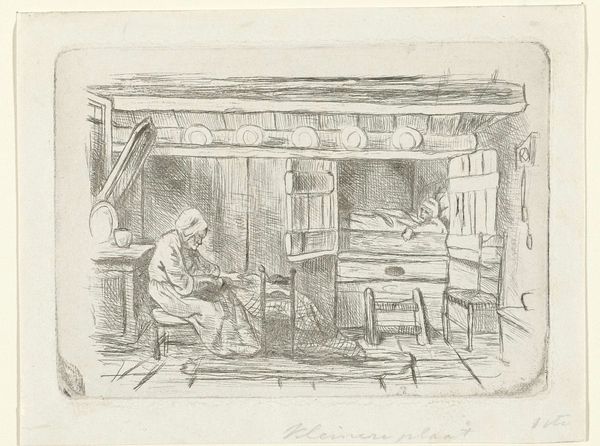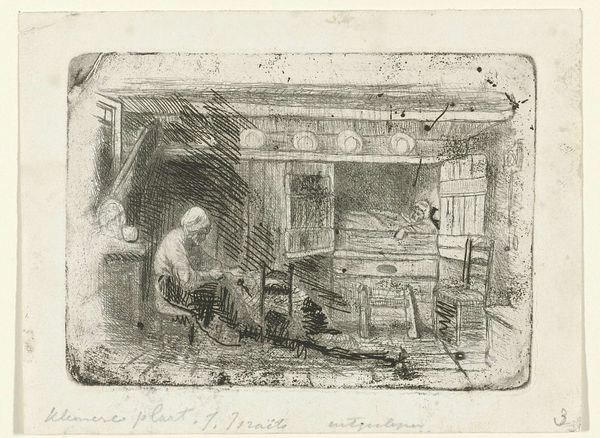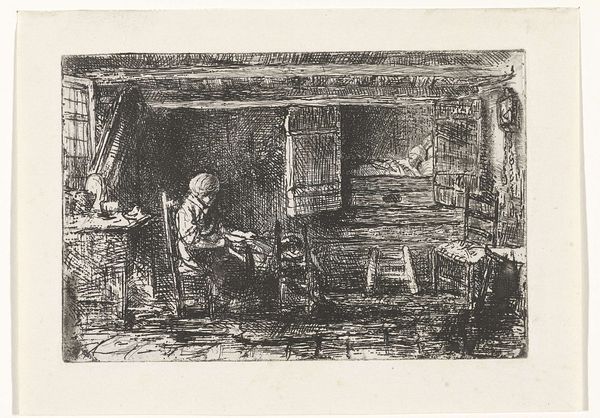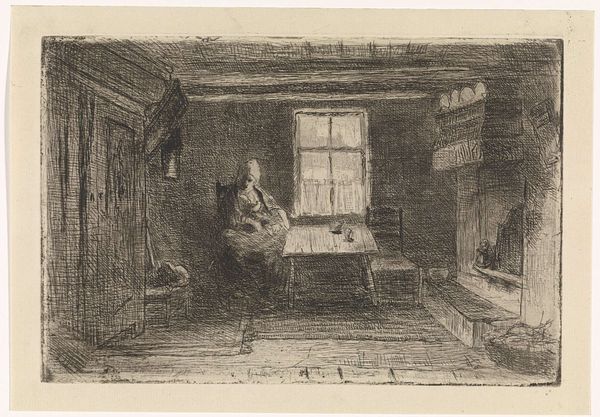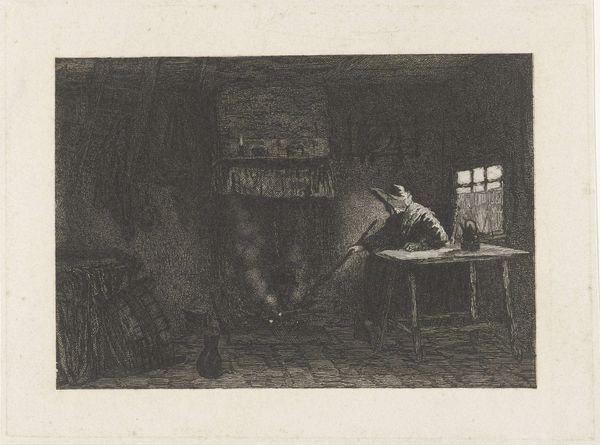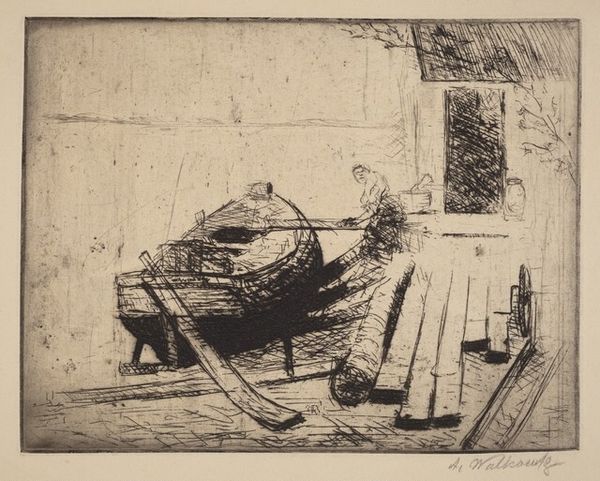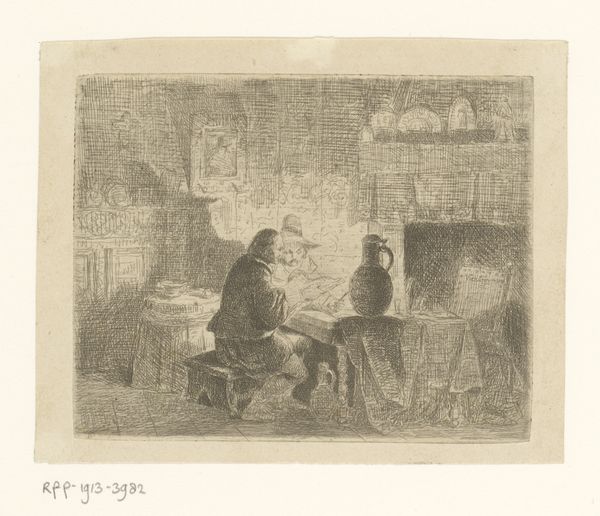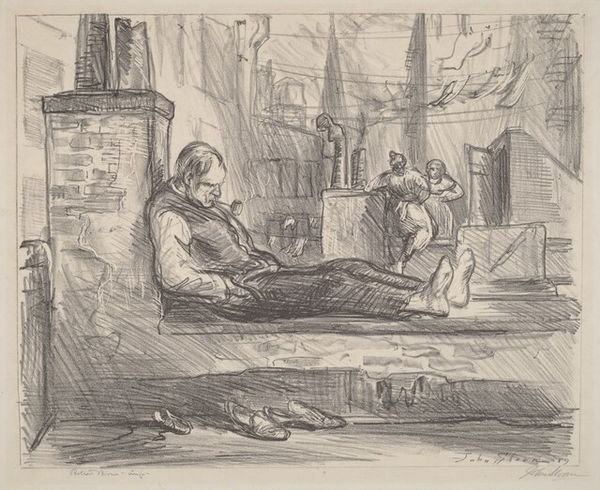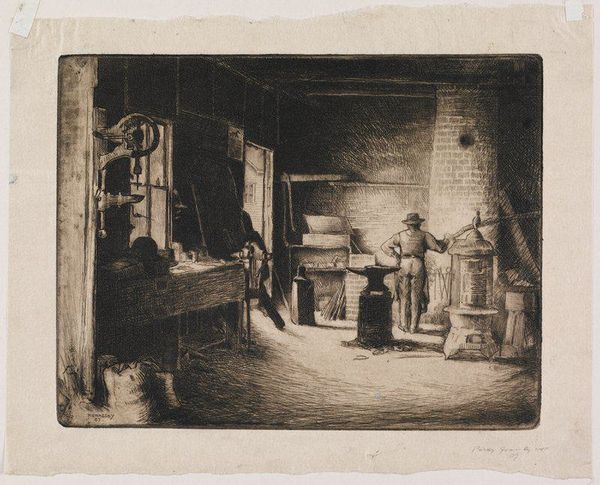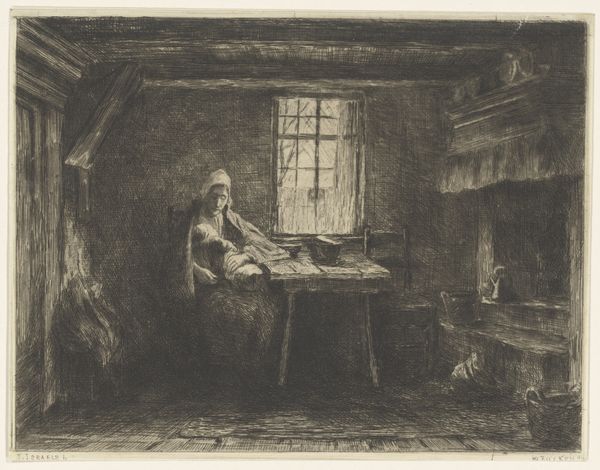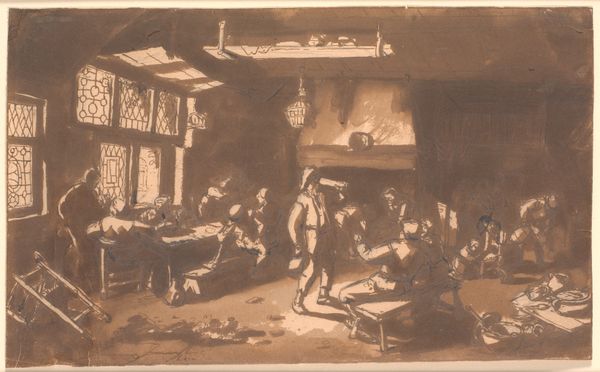
drawing, ink, pencil
#
drawing
#
toned paper
#
light pencil work
#
quirky sketch
#
dutch-golden-age
#
pen sketch
#
pencil sketch
#
landscape
#
personal sketchbook
#
ink
#
pen-ink sketch
#
pencil
#
sketchbook drawing
#
watercolour illustration
#
genre-painting
#
sketchbook art
#
realism
Dimensions: height 97 mm, width 135 mm
Copyright: Rijks Museum: Open Domain
Curator: This work, "Two Figures in an Interior," is attributed to Jozef Israëls and believed to have been created sometime between 1835 and 1888. It's currently held in the Rijksmuseum. What's your initial reaction? Editor: Intimate, almost claustrophobic. The stark, thin lines emphasize the cramped setting. Is that a bed built into the wall? Curator: Precisely. It appears to be a box bed. Note the materials Israëls employed: pencil and ink on toned paper. The limited tonal range adds to that sense of confinement. We can examine the texture of the paper itself. How that influences the rendering. Consider also that it’s a pen and pencil sketch, hinting at its production possibly as personal study or a preparatory drawing. Editor: The composition draws my eye to the seated figure. Their posture suggests weariness or perhaps deep thought. The artist’s rendering captures something vulnerable. The lack of strong lines softens the whole piece, lending it a fragile mood. Curator: The sketch provides a glimpse into the everyday lives of ordinary people, and how the artist translated his world into the artistic conventions of his time. Given the rise of Realism, in the late 19th century, it's very possible to appreciate Israëls’ representation of these figures and the interior space, which, without sentimentality, emphasizes a sense of life’s more constrained qualities. The socio-economic reality is embedded in the subject's body language and material surroundings. Editor: Perhaps. To me, the bare rendering enhances the raw emotion. You can discern everything, and yet much is unstated and so relies more on subjective feelings. A perfect alignment of medium and emotion is evident here. Curator: True. In that spirit, thinking about the artist’s intention behind making this can still give an insightful understanding of the socio-cultural context during that time. Editor: An exercise in capturing human experience, indeed, be it artistic, cultural or deeply human.
Comments
No comments
Be the first to comment and join the conversation on the ultimate creative platform.
